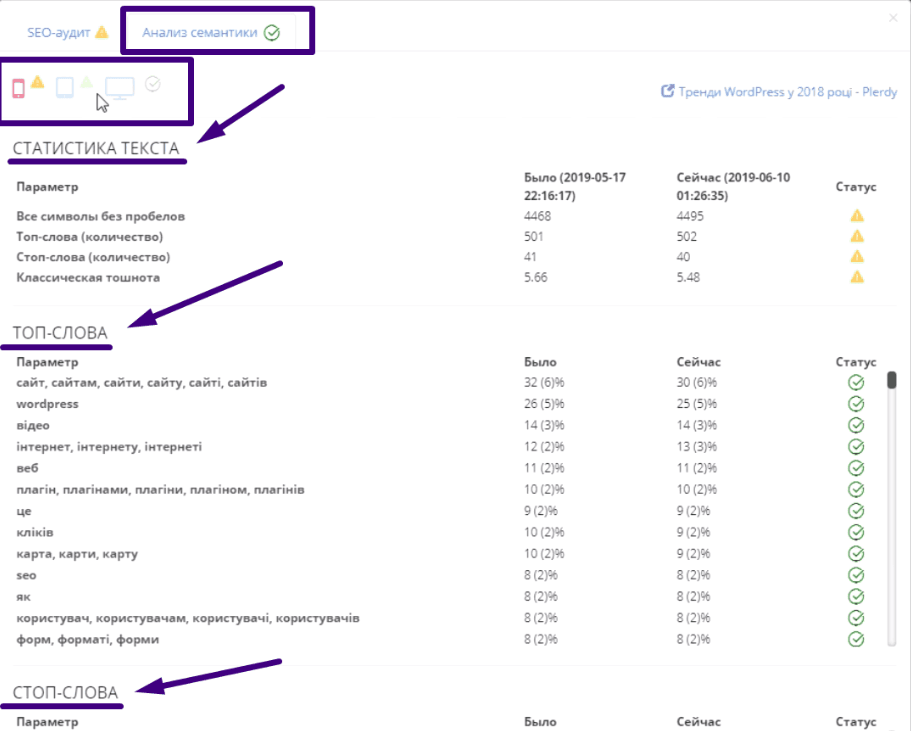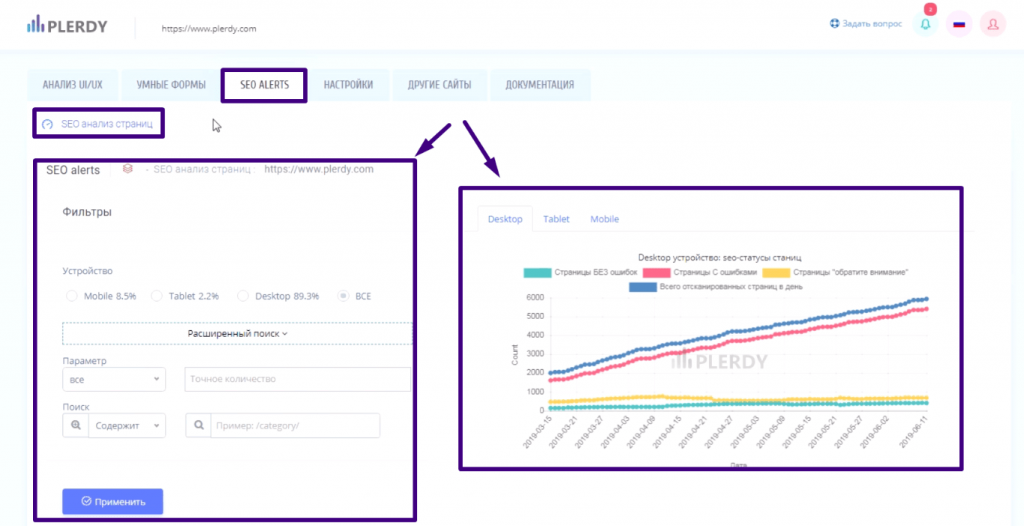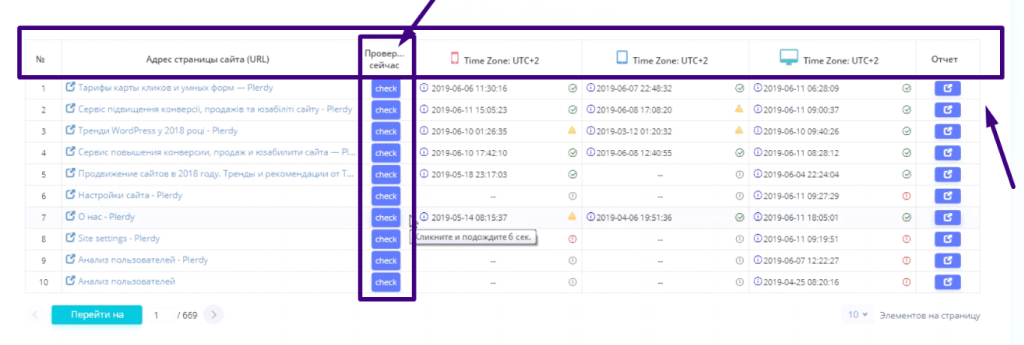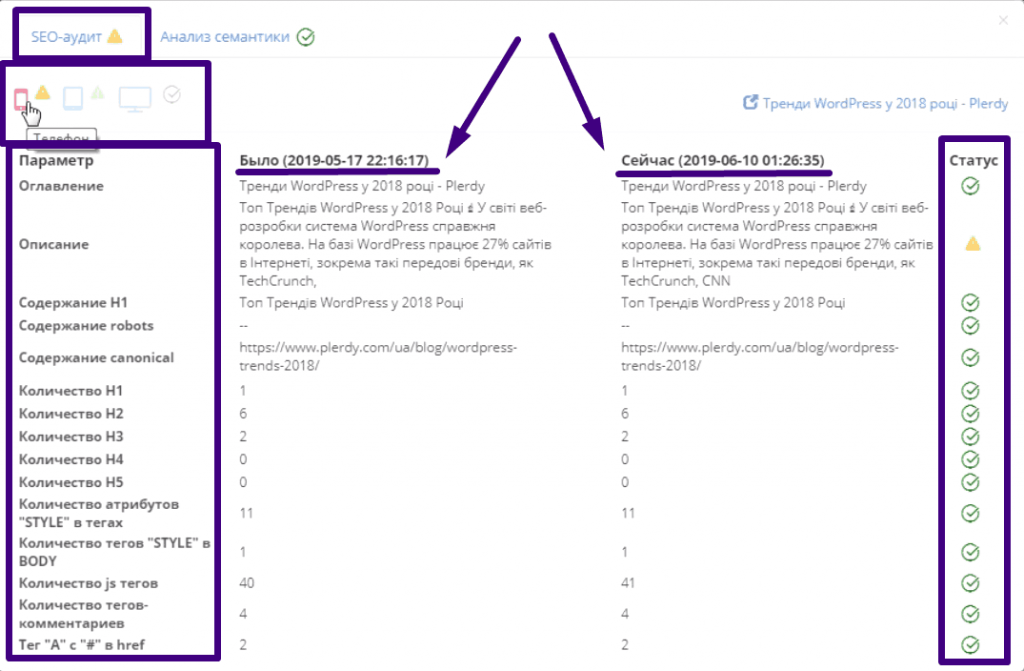Продвижение сайта: как не допустить ошибок и проверить основные SEO показатели
Никто из нас не застрахован от ошибок. Не имеет значения, кто занимался продвижением сайта – ошибиться мог и специалист в SEO, и владелец интернет-ресурса, решивший своими силами вывести его в ТОП. При этом не всегда причина проблем с выходом в ТОП заключается в работе специалиста по SEO. Иногда проблемы самого сайта мешают ему оказаться на первых позициях в поисковой выдаче.
Сегодня разберемся в грубых ошибках, влияющих на продвижение сайта, и поговорим о том, как их избежать с помощью SEO-Alerts (SEO-оповещений).
Основные грубые SEO-ошибки при продвижении сайта
На позиции сайта в поисковой выдаче влияет больше сотни параметров. Остановимся на ключевых:
- чрезмерное количество ключей на странице. Это означает, что на странице одновременно продвигаются 2 или более различные по интенту ключевые слова. Т.е. коммерческие и информационные запросы на 1 странице продвинуть нереально. Таким образом ни по одному из этих слов Вы никогда не выйдете в топ;
- переспам основного ключевого слова. От этого приема стали отказываться еще в конце 2014 года. Текст создается для людей, вписывайте ключи в него органично;
- отсутствующие либо дублирующиеся мета-теги. Бывает, что при наличии одинаковых товаров, только с изменением одного или двух параметров возникает дубли мета-тег. Не обнаружив эту проблему данные страницы не смогут расти в позициях;
- дубли или отсутствие заголовков Н1-Н6 на странице. Заголовки облегчают чтение текста, также они учитываются поисковыми роботами при ранжировании сайта. Не пренебрегайте ими;
- неправильное использование ссылок. При работе над увеличением массы ссылок сайта следует выбирать наиболее трастовые и тематические ресурсы. Только таким образом Вам удастся получить хорошие позиции;
- отсутствие обновлений на сайте. Поисковые алгоритмы благосклонно относятся к интернет-ресурсам с обновляющимся контентом. Регулярно добавляйте новый контент;
- недооценка роли мобильных устройств. Комфорт использования сайта на смартфонах и планшетах учитывается поисковыми роботами в ранжировании сайта. Об этом свидетельствует также внедрение нового приоритета индекса Mobile-first indexing;
- наличие мета-тегов noindex, nofollow, canonical. Noindex запрещает индексацию контента, nofollow запрещает учет исходящей ссылки как фактора передачи веса, canonical используется для избавления от дублированного контента. Использовать их нужно крайне осторожно и только на тех страницах, которые поисковым системам нельзя индексировать;
- переспам атрибутов style в body и тегах. Смысла в этом нет никакого, только код увеличится в размерах и скорость загрузки сайта также вырастет.
Есть и другие ошибки, влияющие на ранжирование сайта, но перечисленные выше особо сильно влияют на SEO продвижение.
Сервис для SEO анализа сайта на ошибки SEO-Alerts
Вручную отслеживать все параметры, влияющие на положение сайта в поисковой выдаче нереально. К тому же поисковые алгоритмы Google не статичны, в них постоянно добавляются новые критерии оценки, меняется “вес” текущих факторов.
В сети масса сервисов, предлагающих собирать всю нужную статистику автоматически. Но функционал многих из них довольно ограничен, часть важных данных упускается. Как пример сервиса для полноценного анализа сайта разберем Plerdy SEO-Alerts, сервис анализирует:
- семантическое ядро страницы (ключевые слова);
- тайтл, дескрипшн и Н1;
- количество тегов Н на странице;
- ведется статистика по атрибутам style в тегах и body;
- подсчитываются файлы javascript;
- подсчитываются теги “а” с “#” в href;
- определяется количество тегов с комментариями;
- ведется проверка наличия тегов canonical, nofollow, noindex.
Сервис позволяет понять, какие слова наиболее популярны на сайте, какие используются ключи, какова их плотность. Plerdy SEO-Alerts позволяет получить текст высокого качества, без переспама ключей.
Ведется мониторинг практически всех факторов, влияющих на SEO-продвижение сайта. Plerdy SEO-Alerts выдает оповещение при наличии ошибок. Это позволяет оперативно их устранить и позиции сайта в поисковой выдаче не ухудшатся. Для этого рекомендуем использовать мониторинг позиций сайта.
Есть полноценная пробная версия. Без каких-либо ограничений можно бесплатно выполнить техническую проверку сайта и оценить качество работы SEO-Alerts.
Без этой статистики выйти в ТОП поисковой выдачи вы не сможете. Вы просто не будете знать, что менять на сайте и в чем именно заключается проблема.
Как использовать Plerdy SEO-Alerts для проверки ошибок на сайте
Здесь разберем пример использования сервиса для анализа сайта:
- регистрируемся здесь;
- переходим во вкладку SEO Alerts, в этом разделе нас интересует вкладка SEO анализ страниц;
- в этой вкладке собирается вся статистика по страницам, которые посещали пользователи. Сбор данных стартует один раз для всех страниц одновременно. Постоянной нагрузки на ваш сайт нет, на его работу plerdy не влияет. Если вносились обновления на страницу, достаточно возле страницы нажать Check, после перехода на страницу нажмите на нее и через 6 секунд обновите админку. Данные будут обновлены;
- в таблице показываются данные по 3 типам устройств и список самих страниц. Разделение по группам устройств сделано из-за логики работы поисковых роботов Google, первым индексируется контент с сайтом, адаптированных под мобильные устройства. Зеленая отметка показывает, что никаких изменений не было, желтая говорит об изменениях на странице, красная метка – указание на ошибку. В последнем столбце таблицы расположилась кнопка, раскрывающая детальный отчет по странице;
- в SEO аудите отображается информация по SEO-оптимизации. Данные показываются в формате “Было”, “Стало”, а в последнем столбце – статус, сразу видно в чем проблема, где произошли изменения. Здесь информация также группируется по 3 типам устройств. Данные приводятся по таким параметрам как оглавление, описание, содержание заголовка Н1, robots, canonical, количество подзаголовков Н1-Н5, сколько раз использовался атрибут style в тегах, сколько раз использовался тег style в body, количество файлов JavaScript и тегов с комментариями. Приводятся и теги “а” с “#” в href;;
- анализируется и семантика на странице, а именно контролируются ТОП и СТОП слова. Сервис показывает как обстояли дела раньше и как все выглядит после внесения изменений. Можно контролировать, например, “потерю” ключевого слова и корректировать контент в соответствии с этим. Данные также сгруппированы по 3 типам устройств.

В будущем планируется добавление новых функций в SEO-Alerts. Но и текущего функционала достаточно для анализа и выявления слабых мест вашего сайта.
Заключение
Успех SEO продвижения сайта зависит не только от знания принципов работы поисковых алгоритмов Google и других поисковиков. Важно и умение работать со статистикой по сайту, оперативно реагировать, например, на “выпавшие” ключевые слова. Вручную собирать все нужные для анализа данные невозможно, так что SEO специалисту придется пользоваться вспомогательными сервисами.
Plerdy SEO-Alerts с этой точки зрения – оптимальный выбор. Собирается вся нужная информация по страницам сайта, к тому же есть возможность бесплатно познакомиться с функционалом сервиса. Так что если ваш сайт еще не попадает в ТОП10 выдачи Google, подключайте Plerdy SEO-Alerts, исправляйте ошибки и наблюдайте за улучшением позиций своего веб-ресурса.
Эксперт в области интернет-маркетинга. Руководитель маркетингового агентства MAVR.
Бизнес-степень «Мастер делового администрирования» (MBA).





